Click on images to enlarge
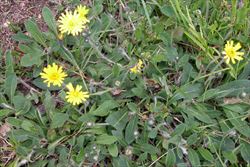
habit in flower (Photo: Greg Jordan)
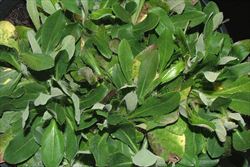
dense mat-forming habit of this species (Photo: Sheldon Navie)
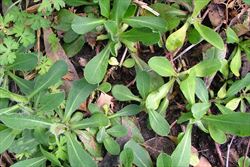
young rosettes of leaves (Photo: Sheldon Navie)

hairy creeping stem (Photo: Rob and Fiona Richardson)
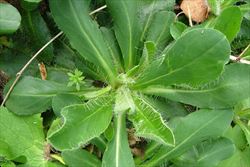
close-up of rosette leaves with long hairs, particularly along their margins (Photo: Sheldon Navie)
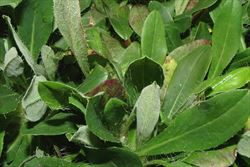
densely whitish hairy leaf undersides (Photo: Sheldon Navie)
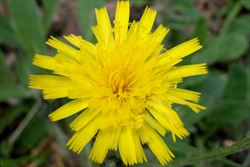
close-up of flower-head (Photo: Greg Jordan)
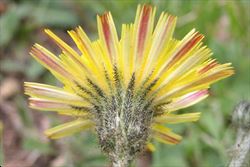
close-up of underside of flower-head showing hairs on its floral bracts (Photo: Greg Jordan)
Scientific Name
Hieracium pilosella L.
Synonyms
Pilosella officinarum F.W. Schultz & Sch. Bip.
Family
Asteraceae (Queensland, New South Wales, the ACT, Victoria, Tasmania, Western Australia and the Northern Territory)Compositae (South Australia)
Common Names
hawkweed, mouse ear hawkweed, mouse-ear hawkweed, mouseear hawkweed
Origin
Native to Europe (i.e. Denmark, Finland, Ireland, the UK, Norway, Sweden, Austria, Belgium, Czechoslovakia, Germany, Hungary, the Netherlands, Poland, Switzerland, Belarus, Estonia, Latvia, Lithuania, Moldova, Ukraine, western Russia, Albania, Bulgaria, Greece, Italy, Romania, Yugoslavia, France, Portugal and Spain), western Asia (i.e. Armenia, Azerbaijan and Georgia) and northern Asia (i.e. western Siberia).
Naturalised Distribution
This species was sparingly naturalised in Tasmania.
Naturalised overseas in New Zealand and North America (i.e. northern and eastern USA and Canada).
Notes
Mouse-ear hawkweed (Hieracium pilosella) is regarded as a potential environmental weed or "sleeper weed" in south-eastern Australia. This species was first recorded as naturalised in Tasmania in 2001, and is the target of an eradication campaign. It is also listed as an "alert weed" in this state, because of its potential impacts on biodiversity and agriculture.
Like other hawkweeds (Hieracium spp.), this species is a potentially serious weed of the alpine areas and tablelands of south-eastern Australia. Mouse-ear hawkweed (Hieracium pilosella) spreads via creeping aboveground stems (i.e. stolons) and develops colonies that can out-compete and replace all other ground vegetation.
Mouse-ear hawkweed (Hieracium pilosella) is a significant weed of pastures, grasslands, open woodlands, river terraces and rocky outcrop vegetation in North America. It is also invasive in tall tussock grasslands in New Zealand, where it replaces native species and degrades community structure over time.

